Blooming wildflowers
 Seaside Poppy Californica maritima: California Poppy is California's state flower, and at the Oceano Dunes District you can find the coastal form called the Seaside Poppy. These plants are low growing with lacy foliage in blue/grey hues. The flowers are vibrant yellow with orange centers. The California Poppy and Seaside Poppy are seen in full bloom around the District during spring.
Seaside Poppy Californica maritima: California Poppy is California's state flower, and at the Oceano Dunes District you can find the coastal form called the Seaside Poppy. These plants are low growing with lacy foliage in blue/grey hues. The flowers are vibrant yellow with orange centers. The California Poppy and Seaside Poppy are seen in full bloom around the District during spring.
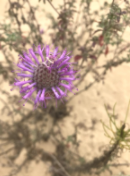 Crisp Dune Mint Monardella crispa: The flowering period to see Crisp Dune Mint’s pink/purple petals is between March and October. However, before you encounter a Crisp Dune Mint’s eye-catching flowers, you may catch its minty sent! True to its name, its leaves give off a minty aroma. The “crisp” part of its name comes from the ruffled edges of its leaves. Crisp Dune Mint can be seen in the unstable dune area and on the slip faces of the dunes.
Crisp Dune Mint Monardella crispa: The flowering period to see Crisp Dune Mint’s pink/purple petals is between March and October. However, before you encounter a Crisp Dune Mint’s eye-catching flowers, you may catch its minty sent! True to its name, its leaves give off a minty aroma. The “crisp” part of its name comes from the ruffled edges of its leaves. Crisp Dune Mint can be seen in the unstable dune area and on the slip faces of the dunes.
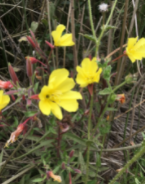 Hooker's Evening Primrose Oenothera elata: Primarily found along the California Coast between San Francisco and San Diego/Northern Baja area. This species can grow upwards of five feet in height, yet its growth can be either upright or sprawling. The large, bright yellow blooms start in late summer/early fall. Hooker's Primrose is a fast grower and a prolific seed producer- loved by seed-eating birds. This species likes moist environments (yet is drought-tolerant), and can be seen along the trail at Oso Flaco Lake.
Hooker's Evening Primrose Oenothera elata: Primarily found along the California Coast between San Francisco and San Diego/Northern Baja area. This species can grow upwards of five feet in height, yet its growth can be either upright or sprawling. The large, bright yellow blooms start in late summer/early fall. Hooker's Primrose is a fast grower and a prolific seed producer- loved by seed-eating birds. This species likes moist environments (yet is drought-tolerant), and can be seen along the trail at Oso Flaco Lake.
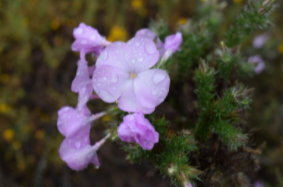
Prickly Phlox Linanthus californicus: Found within the Oceano Dunes District and ranges from San Luis Obispo County to Riverside County. Needle-like leaves line the stems and act as a protection to the plant. The pink or purple flowers show off their colors against the vivid green leaves. The Prickly Phlox's flowers are unique in that the pistil and stamens are tucked away and do not extend outward into the air as they do in many other plant species. Pollinators must travel down a tube for access.

Pink Sand Verbena Abronia umbellata: Found among the coastal sand dune habitat, its thick, succulent-type leaves and hairy stem help this plant survive in the dune environment by holding in needed moisture and withstanding wind. Additionally, leaves are slightly sticky allowing for a layer of sand to stick to the surface of the leaf. This layer of sand acts as a shield, blocking other oncoming sand particles blown by the wind. Pink colored flowers bloom between April and August.
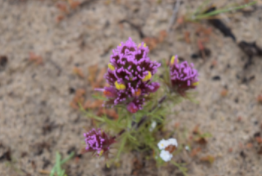
Purple Owl's Clover Castilleja exserta: Native to the Southwestern US but can be found in areas where introduced, including California. This species is in the same genus as Indian paintbrushes. Purple Owl's Clover grows to about 1.5 feet in height and flowers bloom in the Spring. This species is also a hemiparasite, meaning it derives its nutrients from the roots of other plants. Purple Owl's Clover plays host to a threatened butterfly species here in California- the Bay Checkerspot butterfly.
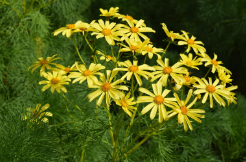
Giant Coreopsis Coreopsis gigantea: The Giant Coreopsis is in the sunflower family and blooms March-May. In contrast to many low growing native plant species within the Oceano Dunes District, the Giant Coreopsis can grow up to six feet in height! It is rather tree-like with a tall trunk and few branches. The blooms are yellow in color and bring brightness to the plant when in bloom.
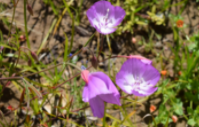
Pismo Clarkia Clarkia speciosa ssp. immaculata: Endemic to our area, as it is mostly seen in the Central California region. This rare species tends to grow in sandy soil and can grow up to 2 feet in height. This species’ pink/orange blooms can be seen in spring and summer.
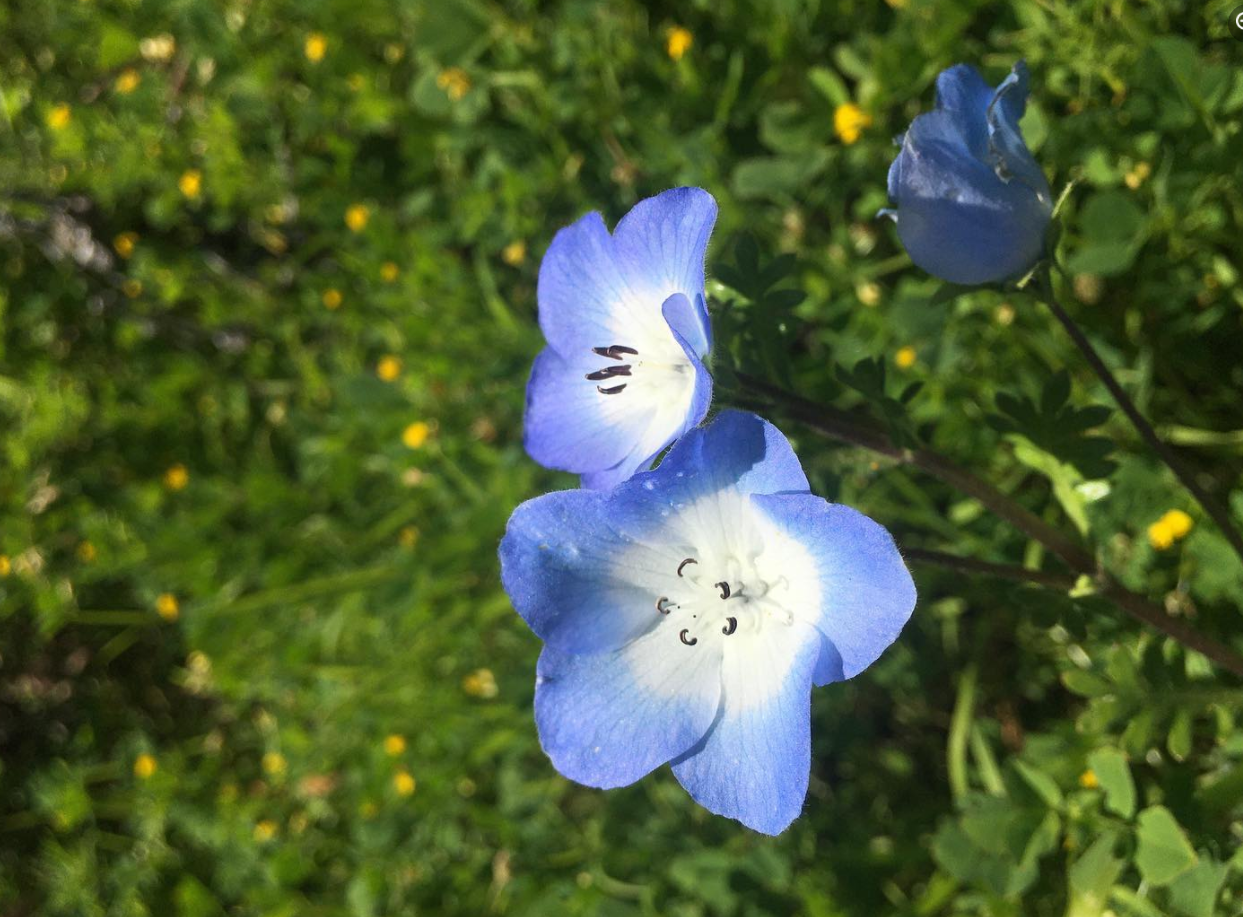
Baby Blue Eyes Nemophila menziesii: Native to the area, flowers have five soft blue petals with white centers. Plant grows to only 6 inches in height. Look for blooms from February to June, and can be seen outside the Oceano Dunes District Visitor Center.
Native shrubs
 Silver Dunes Lupine Lupinus chamissonis: A native shrube to the California Coast, commonly found within the Oceano Dune District. Spotted by its large, flowering purple stalks that appear in the springtime. Also known for its unique, silvery-green, palmate leaves covered in soft hairs. The Silver Dune Lupine has nitrogen-fixing abilities, meaning it fertilizes the soil it is surrounded by making it a great neighbor in the Coastal Dune Scrub community.
Silver Dunes Lupine Lupinus chamissonis: A native shrube to the California Coast, commonly found within the Oceano Dune District. Spotted by its large, flowering purple stalks that appear in the springtime. Also known for its unique, silvery-green, palmate leaves covered in soft hairs. The Silver Dune Lupine has nitrogen-fixing abilities, meaning it fertilizes the soil it is surrounded by making it a great neighbor in the Coastal Dune Scrub community.
 Mock Heather Ericameria ericoides: Endemic to California, this flowering shrub specifically grows in sand dune and coastal hill environments with a range between San Francisco and Los Angeles. Part of the daisy family and is also know by common names such a California Goldenbrush and California heathgoldenrod. Branches are small and golden yellow flowers bloom in summer and fall.
Mock Heather Ericameria ericoides: Endemic to California, this flowering shrub specifically grows in sand dune and coastal hill environments with a range between San Francisco and Los Angeles. Part of the daisy family and is also know by common names such a California Goldenbrush and California heathgoldenrod. Branches are small and golden yellow flowers bloom in summer and fall.
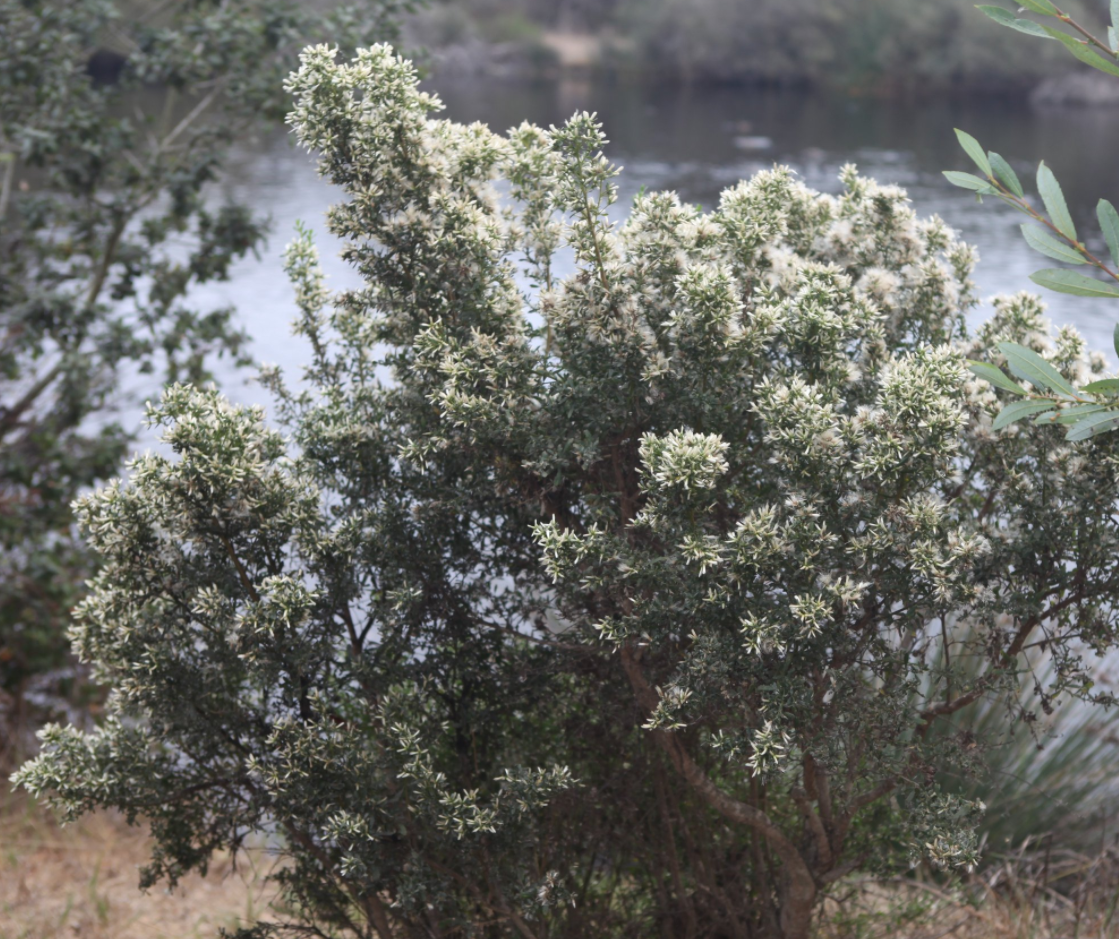 Coyote Brush Baccharis pilularisis a common shrub belonging to the sunflower family and grows in California, Oregon, and Baja California. It is recognized all year with its green foliage. Flowers bloom between August to December. Male flowers are yellow and smaller, while female flowers are more fluffy, almost resembling cotton, and bloom towards the end of the blooming period in November and December.
Coyote Brush Baccharis pilularisis a common shrub belonging to the sunflower family and grows in California, Oregon, and Baja California. It is recognized all year with its green foliage. Flowers bloom between August to December. Male flowers are yellow and smaller, while female flowers are more fluffy, almost resembling cotton, and bloom towards the end of the blooming period in November and December.












